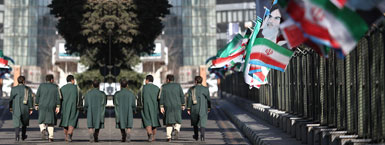Archaeology
The history of the establishment of archeology in Iran dates
back to 935 when it was founded at the Faculty of Literature and Humanities of the
University of Tehran; nevertheless, for the first time, the Foundation of Archeology
Department with three sub-disciplines i.e. "prehistoric archeology", "historical
archeology" and " Islamic era Archeology" was established in 1989 at the Faculty
of Humanities of Tarbiat Modares University.
Archaeologists strive to rebuild human lifestyles on the basis
of archaeological remains. In fact, the archaeologists try to investigate the past
by asking logical questions and conducting the right scientific methods to find
answers to such questions. From this perspective, archeology is first of all the
history of ideas, hypotheses, and ways to look back. The beginning of archaeological
activity in Iran goes back to the growing efforts of Western orientalists in different
parts of the country who were striving to obtain historical monuments in order to
store them in European museums or add them to their private collections. Learning
from the experience of Western archeological studies, Iranian archeologists changed
their exploration methods and information classification at the beginning of the
20th century. The use of results obtained by other fields of study such as geography,
aerial photography, historical geography, human and economic sciences, the use of
radiocarbon dating to track the findings, radiation measurements, etc., became very
common and a prerequisite for early research (field survey study) and scientific
research. It has been a long time since the scholars of all sciences have admitted
that our age is a multifaceted and interdisciplinary era when a one-dimensional
view has its deficiencies, deficiencies which can be removed by taking a holistic
and comprehensive view of science. With the prosperity and expansion of interdisciplinary
studies, archaeological science also expanded its field of research and began to
make use of numerous disciplines such as "genetics", "bone science" and "botany"
and new theoretical approaches such as "semiotics" "iconography", "iconology", "history
of cultural studies", "ancient pattern" attractor and many methods of analytical
elemental (spectrometric) analyzes, such as XRF, XRD, PIXE. |




